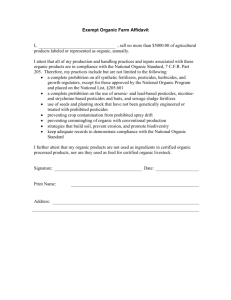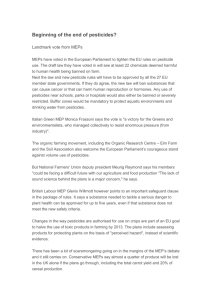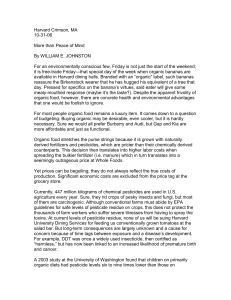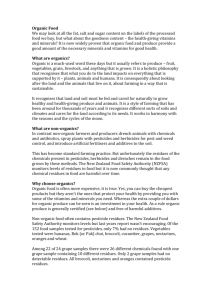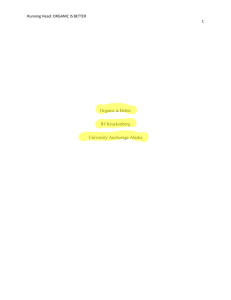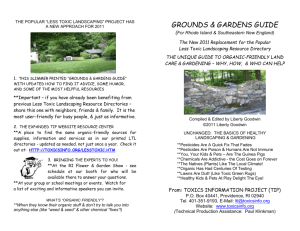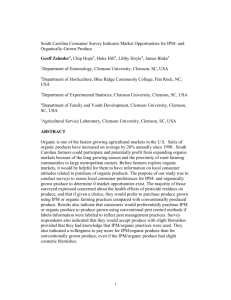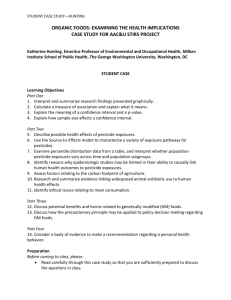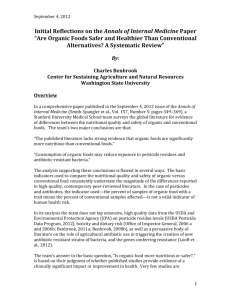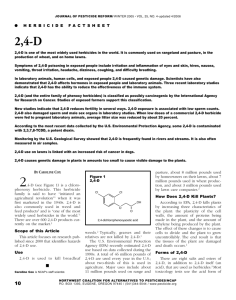Lesson 20 - Exposure
advertisement
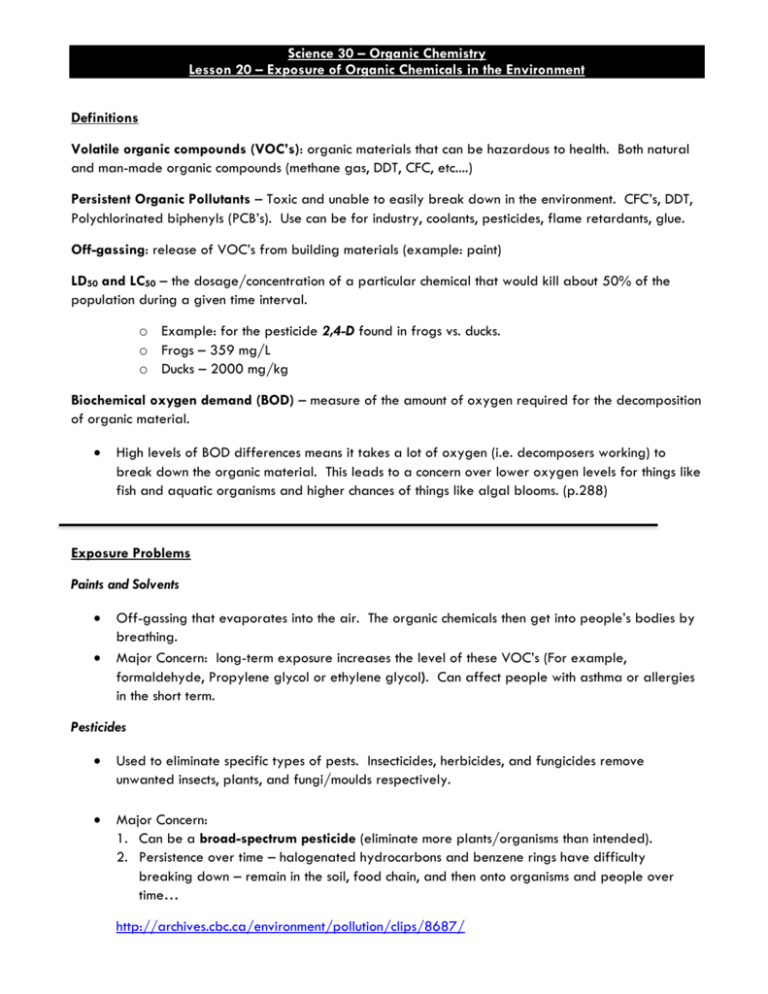
Science 30 – Organic Chemistry Lesson 20 – Exposure of Organic Chemicals in the Environment Definitions Volatile organic compounds (VOC’s): organic materials that can be hazardous to health. Both natural and man-made organic compounds (methane gas, DDT, CFC, etc....) Persistent Organic Pollutants – Toxic and unable to easily break down in the environment. CFC’s, DDT, Polychlorinated biphenyls (PCB’s). Use can be for industry, coolants, pesticides, flame retardants, glue. Off-gassing: release of VOC’s from building materials (example: paint) LD50 and LC50 – the dosage/concentration of a particular chemical that would kill about 50% of the population during a given time interval. o Example: for the pesticide 2,4-D found in frogs vs. ducks. o Frogs – 359 mg/L o Ducks – 2000 mg/kg Biochemical oxygen demand (BOD) – measure of the amount of oxygen required for the decomposition of organic material. High levels of BOD differences means it takes a lot of oxygen (i.e. decomposers working) to break down the organic material. This leads to a concern over lower oxygen levels for things like fish and aquatic organisms and higher chances of things like algal blooms. (p.288) Exposure Problems Paints and Solvents Off-gassing that evaporates into the air. The organic chemicals then get into people’s bodies by breathing. Major Concern: long-term exposure increases the level of these VOC’s (For example, formaldehyde, Propylene glycol or ethylene glycol). Can affect people with asthma or allergies in the short term. Pesticides Used to eliminate specific types of pests. Insecticides, herbicides, and fungicides remove unwanted insects, plants, and fungi/moulds respectively. Major Concern: 1. Can be a broad-spectrum pesticide (eliminate more plants/organisms than intended). 2. Persistence over time – halogenated hydrocarbons and benzene rings have difficulty breaking down – remain in the soil, food chain, and then onto organisms and people over time… http://archives.cbc.ca/environment/pollution/clips/8687/ Sewage Human waste matter that is released into the water system. Major Concern: Disease causing viruses and bacteria entering the water system. (i.e. E. coli) http://archives.cbc.ca/environment/pollution/topics/1672-11530/ Fertilizers Excess nutrients (nitrogen, phosphorus) from the fertilizers gets into the water supply. Run-off of the chemicals enter lakes and river and large amounts of algae feed on the nutrients and takeover the lake/river. Major Concern: Death of fish and aquatic life due to increase in algae and bacteria in the water. http://www.youtube.com/watch?v=AvigoZgYbT4 How they spread Run-off – transfer through the water supply. Drift – transfer by wind or air currents from the location sprayed Grasshopper effect – transfer by evaporating in warm climates, and coming down as precipitation in cooler climates. (p.286) Limiting Exposure 1. Continuing monitor of toxins and their concentration levels in the environmental (Albert Environment, Environment Canada) http://www.envinfo.gov.ab.ca/AirQuality/ 2. Reduce amount of POP’s (Persistent organic pollutants) – see the list of the “dirty dozen” on p.298 3. Educate workers and those exposed to VOC’s on a long-term basis to exposure education and protection (coveralls, gloves, etc.). Understand WHMIS symbols in the workplace. Read the following sections to supplement your notes from above. When you complete this you can start on the homework for this section. 1. What is the main concern with off-gassing in paint and what are some ways to reduce exposure (p.280)? 2. What are other building materials besides paint that can be manufactures form recycled materials? (p.280) 3. What is pesticides target specificity and what is a broad-spectrum pesticide (p.283) 4. Explain how the herbicide 2,4-D is affecting plant growth (p.283) 5. Sketch the grasshopper effect process below (p.285 – explanation and p. 286 for diagram) 6. What is an algal bloom (p.288) and what is the concern with one? 7. What is warfarin and explain why it is not used very much anymore for pesticide control (p. 289) 8. What are concerns with by-products of 2,4-D production (p.292) 9. What are alternative strategies to control pests besides pesticides (p.294) 10. List the “Dirty Dozen” p.298 below:


